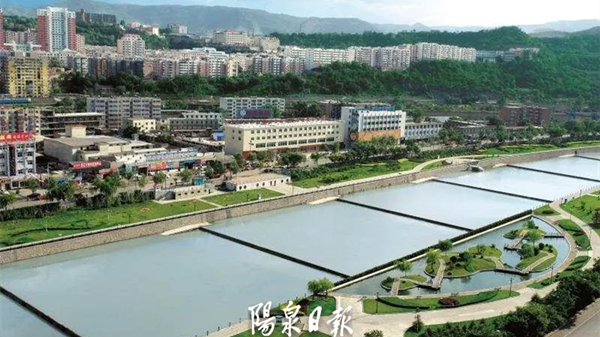Fortress on Great Wall named after princess

Niangziguan Pass in the county of Pingding is an important fortress on the Great Wall. [Photo by Wu Tao for China Daily]
In China, the association between the Great Wall and women has always been one tinged with a pathos of tragedy, as the ancient defensive works were sometimes the battlegrounds that could lead to the death of their loved ones.
As seen in the legend of Meng Jiangnyu, a woman who saw the collapse of a section of the Great Wall through her tears and curses.
But there is another story of a woman who devoted much of her energy to protecting the Great Wall and safeguarding the nation, making the section of wall she was stationed a household name among Chinese people.
The woman is Princess Pingyang, the third daughter of Li Yuan, the founding emperor of the Tang Dynasty (618-907), and the section of the Great Wall named after her is called Niangziguan Pass, or Female General's Pass.
The pass is an important Great Wall fortress located in the Taihang Mountains in the northeast of Pingding county in Shanxi province.
Niangziguan Pass, controlling an important passage between Shanxi and its neighboring Hebei province, was a strategic stronghold in times of conflict and thus is a silent witness to many wars throughout history.
Built against rising cliffs on one side and facing a deep chasm on the other, Niangziguan Pass holds such a strategic position that is said to be impassable even to an army of 10,000. It is among the nine most famous fortresses along the Great Wall.
But for a certain period of time, this strategically important fortress was managed by the female general Pingyang, who did an even better job than her male colleagues, according to the history books in Pingding county.
The existing fortress and the Great Wall were built in 1542 during the Ming Dynasty (1368-1644) by the famed general Qi Jiguang, with two gate towers and a 500-meter wall that remain intact.
To memorialize Princess Pingyang, a statue of the female general was built at the southern gate of the fortress. Behind the statue was a watch tower called "the Tower of Veteran Generals".
To the southwest of the fortress is a village also called Niangziguan. Villagers there said they are mostly the offspring of the soldiers stationed in the fortress centuries ago.
The village was built along a stream called Taohe. Most of the houses there were built with stone, with many having a history of more than 100 years.
The streets, paved with cobbled stones, can lead tourists to the Great Wall and the pass, as well as the meandering stream. Such a layout has made the best use of the mountains, the Great Wall and the stream, giving tourists an experience combining the features of a typical riverside town in the south of China and a frontier settlement in the north.
A small reservoir has been built on the Taohe Stream, forming a pond of about 8,000 square meters. With reflections of the mountains, the Great Wall and the fortress, the western bank of the pond is an ideal site for tourists to take pictures.
Niangziguan Pass was included on the list for the protection of Shanxi's cultural heritage sites in 1986.
Wang Pei contributed to this story.





